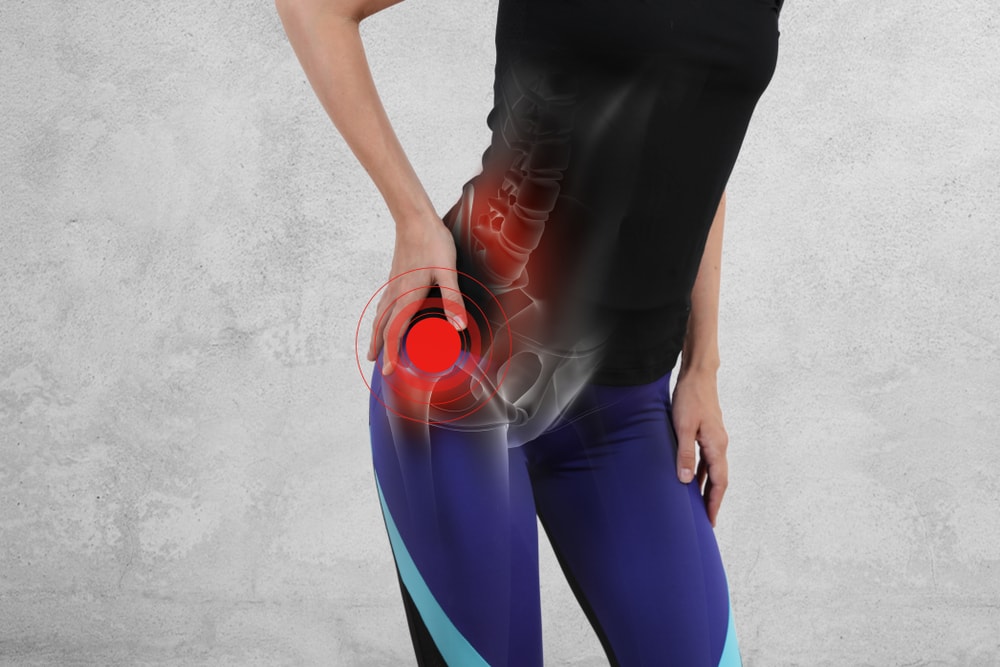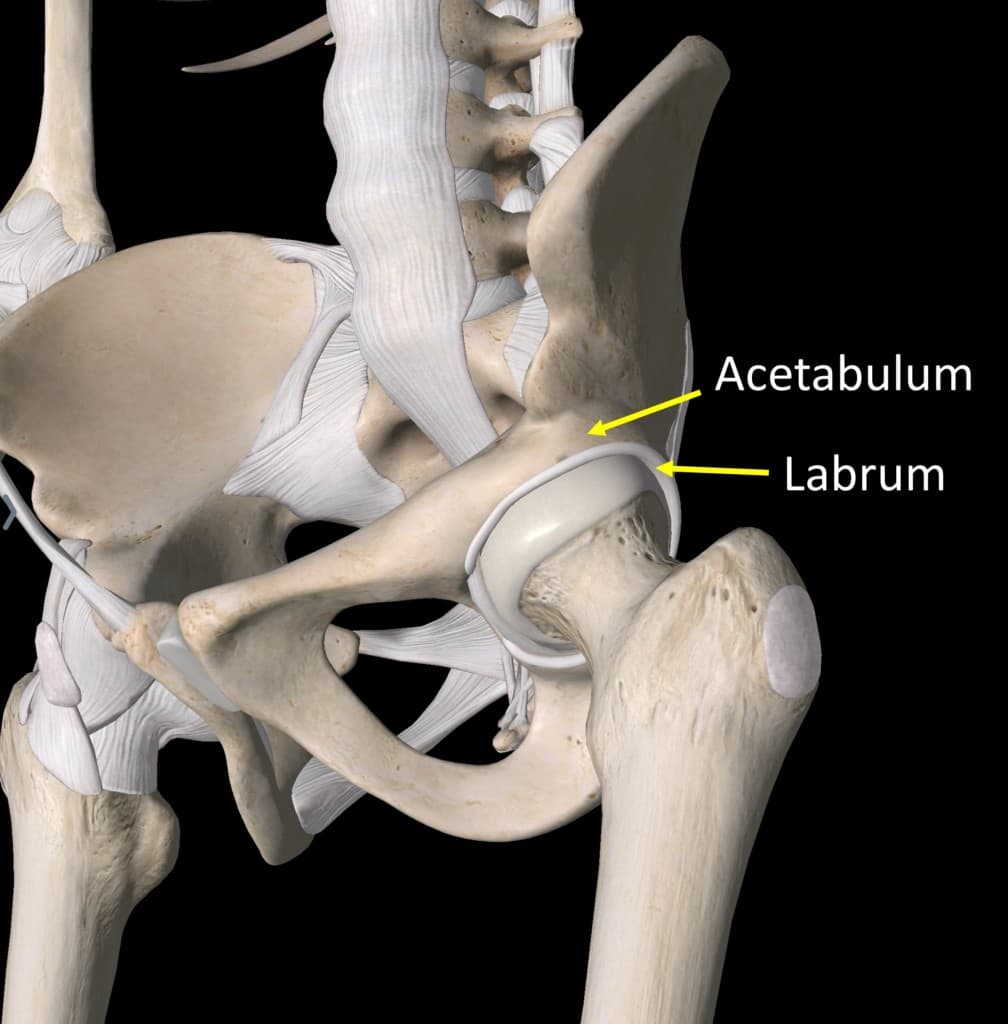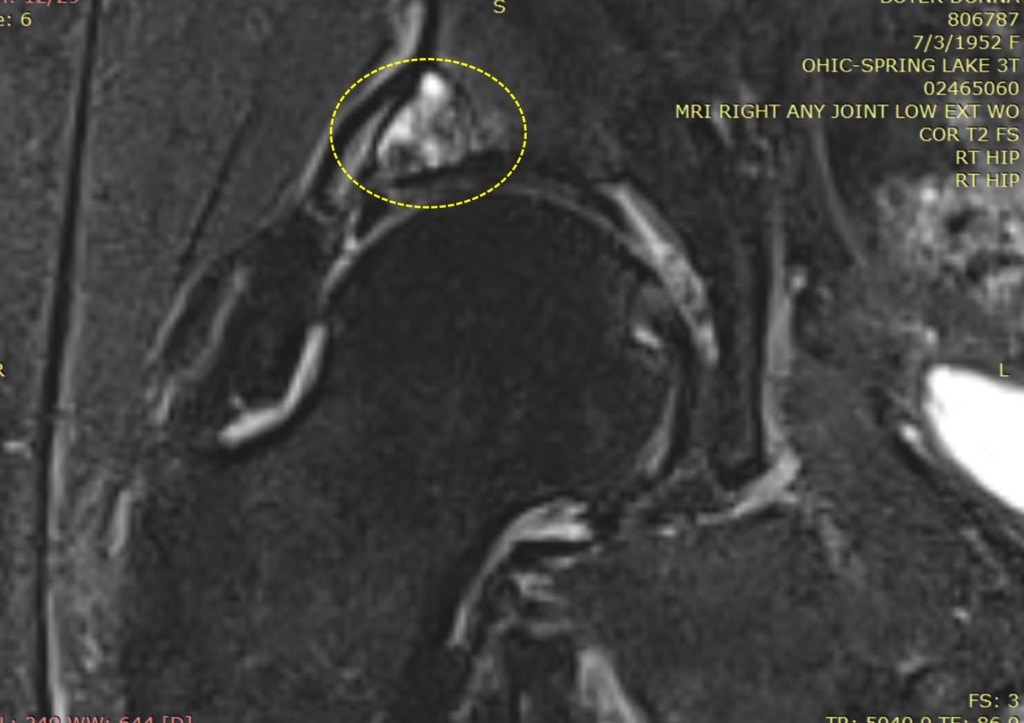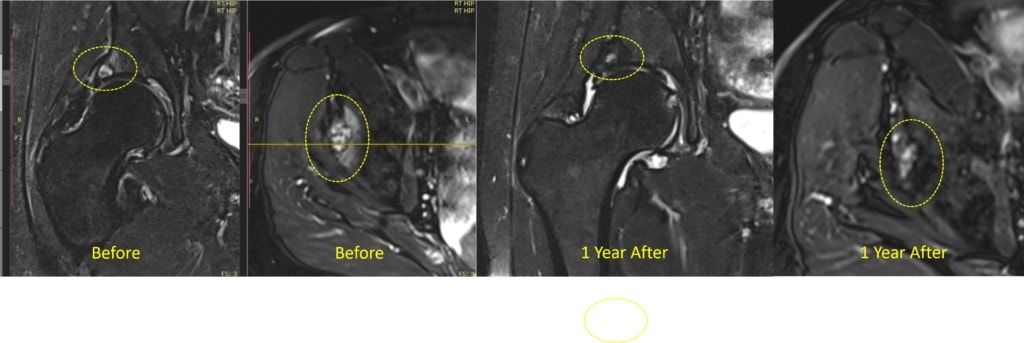Treating an Acetabular Cyst and Healing the Hip Socket

Credit: Shutterstock
On this page:
- What Is an Acetabular Cyst?
- How Are Acetabular Cysts Usually Treated?
- Donna’s Treatment Journey and MRI Results
I love to post great stories about how interventional orthobiologics has changed people’s lives. That includes keeping aging athletes doing what they love. Today I’ll go over some great results from a patient with hip arthritis and an acetabular cyst. Let’s dig in.
Aging Athletes
The baby boomers are the first generation in the industrial era to want to stay highly active as they move into their 50s, 60s, and 70s. Prior generations have generally stopped or severely curtained physical activity as they age. However, many 1980s and 90s aerobics queens and gym rats want to keep it up well past the point when the grey hair sets in.
I’m one of those guys. That means that as parts and pieces break or get injured or suffer from too much degeneration, they need to be treated without surgery. The only way I know how to do that is once or twice a year interventional orthobiologic tune-ups. So for me, that may mean that my old severe AC shoulder separation on the left is acting up and needs more ligament injections to get it stable again (it has few viable ligament fibers) or my aging knee needs need a PRP tune-up.
For Donna, who used to be an aerobics instructor (which is apparently how she met her physician husband), that means focusing on the chronic problems and the new issues that crop up due to intensive Pilates work. I’ve seen her many times through the years to fix various issues. Hence, she came to my office last year barely able to walk across an airport without a limp with a new hip problem that was front and center.
What Is an Acetabular Cyst?

Donna’s right hip MRI demonstrated moderate hip arthritis with damage to the labrum and a large acetabular cyst. The acetabulum is the socket part of the hip (see image above). The labrum or the “lip” of the hip socket connects to the outer rim of the bony acetabulum.
When the bone dies off, the body creates a cyst. Hence, a bone cyst is never a great thing as it means that the forces on an area exceeded the body’s ability to repair that spot. After the bone dies, the body walls the area off with a dense shell, which gives the cyst its often spherical appearance.

Donna’s MRI image above shows many small acetabular cysts in the yellow dashed circle. The white area represents the extent of cysts, which often eventually coalesce into larger cysts.
How Are Acetabular Cysts Usually Treated?
These cysts, when causing hip pain, are commonly treated with surgery. That could include an arthroscopic hip procedure where the cyst is removed, and a bone graft is inserted. Another possible treatment is a hip replacement, especially when arthritis is present, as it was in Donna’s case. However, both of these are big surgeries that would take Donna out of Pilates for at least months and up to a year for the joint replacement. She didn’t want that kind of downtime as once we age, it’s “use it or lose it”.
Donna’s MRI Results and Aceteabular Cyst Treatment

By the time Donna could get back to Colorado from Florida, it was a year later and she no longer had a noticeable limp and had reported significant improvement. She had a new MRI done which demonstrated about a 60% reduction in the size of the acetabular cyst. In the MRI comparison above, you can see less white area in the dashed circles, representing a regression and bone in-fill of the cyst. We treated the joint and labrum a second-time last week.
Donna’s been back to Pilates since a few weeks after the injection treatment. If she had had either surgery, she would have sustained significant loss of muscle or if she had the joint replaced, would have just been getting back to a very limited form of Pilates about now, a year out.
Getting Old
Getting old and trying to stay active isn’t for sissies. What I mean by that is that it takes a concerted effort to stay ahead of our aging bodies so we can defy mother nature and keep doing what we love. That’s what we do at Regenexx. We enable aging athletes to avoid the big life-changing surgeries, even when acetabular cysts are present.
The upshot? I’m glad I could help Donna avoid hip surgery, but more importantly, help an aging athlete stay active. I’m not sure how this grand experiment of aging baby boomers doing things that only their younger parents and grandparents would dare try will work out, but it sure beats sitting on the couch!

If you have questions or comments about this blog post, please email us at [email protected]
NOTE: This blog post provides general information to help the reader better understand regenerative medicine, musculoskeletal health, and related subjects. All content provided in this blog, website, or any linked materials, including text, graphics, images, patient profiles, outcomes, and information, are not intended and should not be considered or used as a substitute for medical advice, diagnosis, or treatment. Please always consult with a professional and certified healthcare provider to discuss if a treatment is right for you.